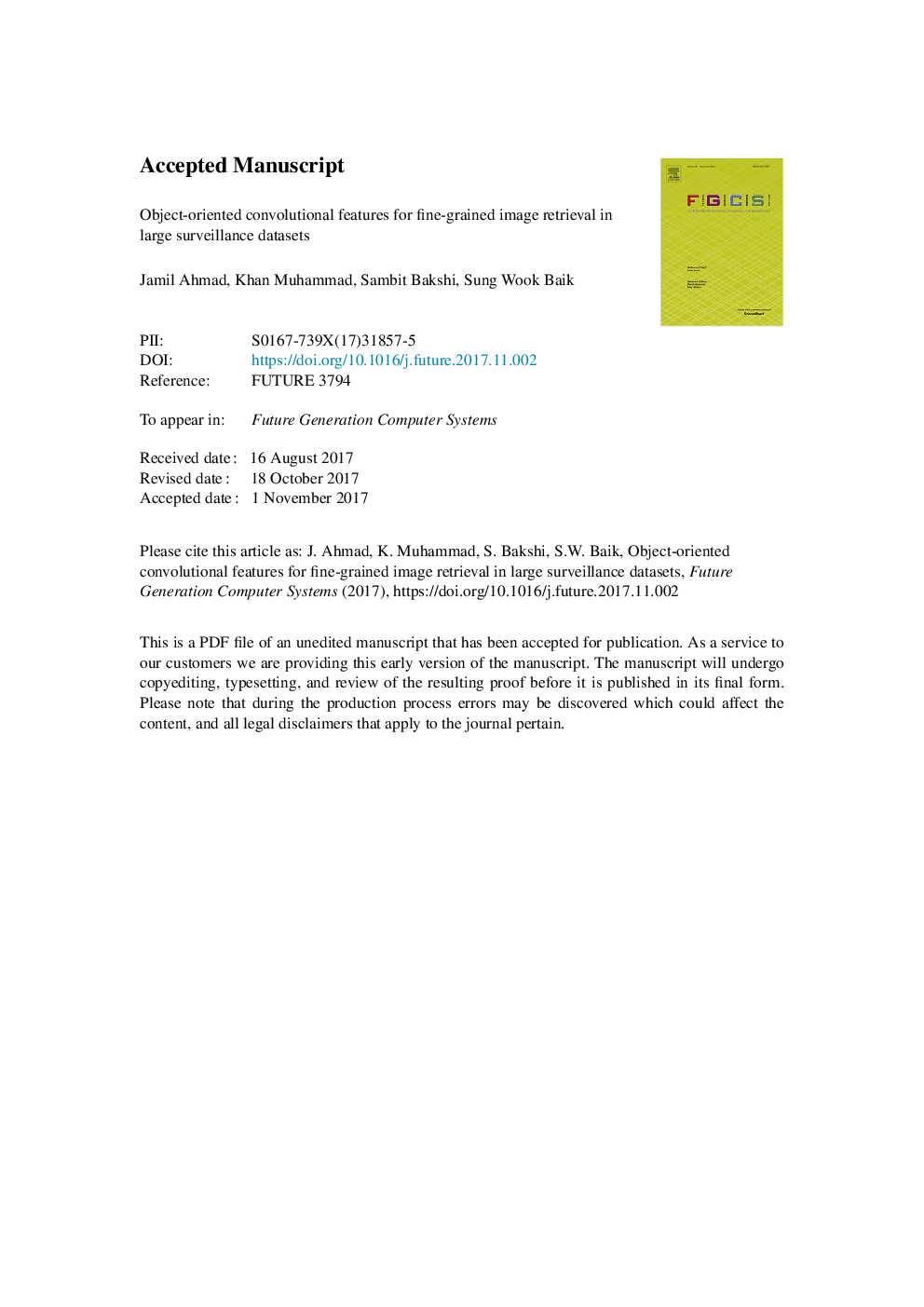| Article ID | Journal | Published Year | Pages | File Type |
|---|---|---|---|---|
| 6873277 | Future Generation Computer Systems | 2018 | 30 Pages |
Abstract
Large scale visual surveillance generates huge volumes of data at a rapid pace, giving rise to massive image repositories. Efficient and reliable access to relevant data in these ever growing databases is a highly challenging task due to the complex nature of surveillance objects. Furthermore, inter-class visual similarity between vehicles requires extraction of fine-grained and highly discriminative features. In recent years, features from deep convolutional neural networks (CNN) have exhibited state-of-the-art performance in image retrieval. However, these features have been used without regard to their sensitivity to objects of a particular class. In this paper, we propose an object-oriented feature selection mechanism for deep convolutional features from a pre-trained CNN. Convolutional feature maps from a deep layer are selected based on the analysis of their responses to surveillance objects. The selected features serve to represent semantic features of surveillance objects and their parts with minimal influence of the background, effectively eliminating the need for background removal procedure prior to features extraction. Layer-wise mean activations from the selected features maps form the discriminative descriptor for each object. These object-oriented convolutional features (OOCF) are then projected onto low-dimensional hamming space using locality sensitive hashing approaches. The resulting compact binary hash codes allow efficient retrieval within large scale datasets. Results on five challenging datasets reveal that OOCF achieves better precision and recall than the full feature set for objects with varying backgrounds.
Related Topics
Physical Sciences and Engineering
Computer Science
Computational Theory and Mathematics
Authors
Jamil Ahmad, Khan Muhammad, Sambit Bakshi, Sung Wook Baik,
